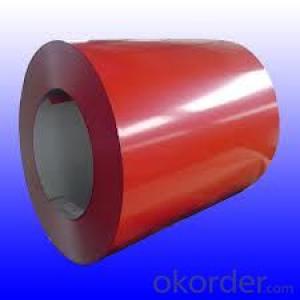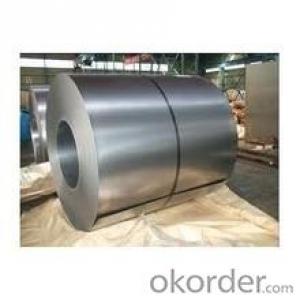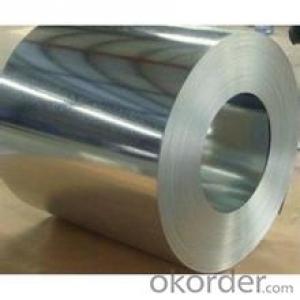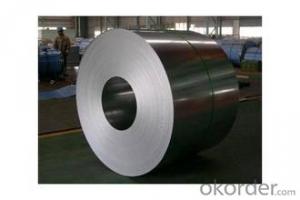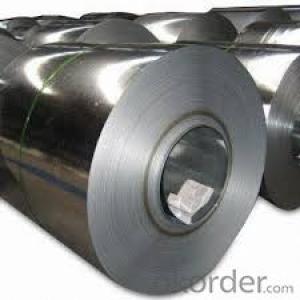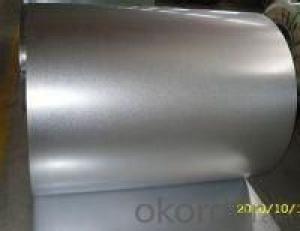EXCELLENT HOT-DIP GALVANIZED/ALUZINC STEEL in China
- Loading Port:
- Tianjin
- Payment Terms:
- TT OR LC
- Min Order Qty:
- 30 m.t.
- Supply Capability:
- 5000000 m.t./month
OKorder Service Pledge
OKorder Financial Service
You Might Also Like
Description:
Hot-dip galvanized steel coils are available with a pure zinc coating through the hot-dip galvanizing process. It offers the economy, strength and formability of steel combined with the corrosion resistance of zinc. The hot-dip process is the process by which steel gets coated in layers of zinc to protect against rust. It is especially useful for countless outdoor and industrial applications.
Specification:
THICKNESS:0.18mm-1.5mm
WIDTH:900mm-1250mm
COATING MASS:AZ30-AZ150
SPANGLE:Minimized Spangle,Zero Spangle
SURFACE TREATMENT:N0on or Chromated,Non or Oiled,Non or Anti Finger Print
COIL INNER DIAMETER:508mm/610mm
COIL WEIGHT:3mt-7m
Applications:
1. roofing
2. gutters
3. unexposed automotive parts
4. appliances
5. furniture
6. outdoor cabinetry
Images:
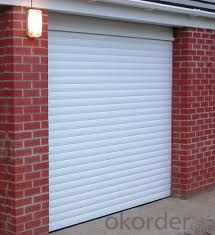
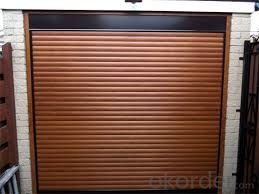
We can ensure that stable quality standards are maintained, strictly meeting both market requirements and customers’ expectations. Our products enjoy an excellent reputation and have been exported to Europe, South-America, the Middle-East, Southeast-Asia, Africa and Russia etc.. We sincerely hope to establish good and long-term business relationship with your esteemed company.
- Q: How are steel coils used in the manufacturing of industrial compressors?
- Steel coils are used in the manufacturing of industrial compressors as they are shaped and formed into various components of the compressor, such as the casing, cylinder, and piston. The steel coils provide strength, durability, and stability to these components, allowing the compressor to withstand high pressure and perform efficiently in industrial applications.
- Q: Is Carbon Steel strong for swords?
- Depends on the sword design. Some swords are high carbon, some a low carbon, some are made from a billet of alternating high and low carbon ('Damascus' steels). It all depends on what characteristics you want for your sword. Softer steels won't hold an edge as well but they offer great flexibility so your sword won't shatter when they make impact with armor or shields. Harder steels hold better edges but they're prone to binding in wooden shields and then being broken as soon as a bending force is applied along the weak axis of the blade. Japanese Katanas have both hard and soft steels to allow the blade to bend yet still hold strong edges. If you're making the sword from raw materials on your own, look up some different recipes for crucible steel. It's probably the most fun and involved process.
- Q: I'm doing a project on stainless steel dining utensils and its a little more difficult than i thought it would be. There are no sites on the web that tells the creator or when it was first used. There's no sites that that i can see of that talk about the history of stainless steel dining utensils, only dining utensils in general. Please help, i can't change my project now ):
- The booklet 100 years of WMF (WMF: Württembergische Metallwarenfabrik / Wurttemberg Metal Ware Factory) includes the patent application (or better: trade mark application) for stainless Cromargan Steel for the production of cutlery in 1926. Cromargan was the company's fantasy name for stainless Krupp V2A steel. Page 86 (unfortunately WMF is a German company, the booklet therefore is in German). Has nice pictures anyways. Appendix: I found the text (a bit cut however) in English language (without images and booklet, just HTML). See below.
- Q: How are steel coils used in the production of household goods?
- Steel coils are an essential component in the production of various household goods. These coils are typically made from high-quality steel and are manufactured to specific dimensions and thicknesses to meet the requirements of different products. One of the primary uses of steel coils in household goods production is in the manufacturing of appliances such as refrigerators, washing machines, and dishwashers. The coils are used to create the body and framework of these appliances, providing strength, durability, and stability. Additionally, steel coils are often used in the production of smaller household appliances like toasters, blenders, and coffee makers. Furthermore, steel coils are also used in the production of furniture, particularly in the manufacturing of metal frames for chairs, tables, and cabinets. These coils provide the necessary support and structural integrity to the furniture, ensuring long-lasting durability. Another significant application of steel coils in household goods production is in the production of shelving units and storage solutions. Steel coils can be shaped and formed to create sturdy shelves and racks that can hold heavy items and withstand regular use. These shelves are commonly used in kitchens, garages, and storage rooms to organize and store various household items. In summary, steel coils play a crucial role in the production of household goods. They are used to create the framework, structure, and support for appliances, furniture, and storage solutions. Their strength, durability, and versatility make them an ideal material for manufacturing a wide range of household products that are designed to withstand everyday use.
- Q: How are steel coils used in the production of power generation equipment?
- Steel coils are an essential component in the production of power generation equipment due to their strength, durability, and versatility. These coils are typically made from high-quality steel and are widely used in various applications within the energy sector. One of the primary uses of steel coils in power generation equipment is in the construction of generators. Steel coils are used to create the stator and rotor cores, which are crucial parts of the generator. These cores are responsible for generating the magnetic field necessary for converting mechanical energy into electrical energy. The steel coils provide the necessary support and stability to ensure efficient and reliable power generation. Additionally, steel coils are used in the manufacturing of transformers, which play a critical role in power distribution. Transformers are responsible for stepping up or stepping down the voltage levels to facilitate the transmission of electricity over long distances. Steel coils are used to create the primary and secondary windings of the transformer, enabling the efficient transfer of electrical energy. Another application of steel coils in power generation equipment is in the production of turbines. Turbines are used in various types of power plants, such as hydroelectric, thermal, and nuclear power plants, to convert the kinetic energy of a fluid or steam into mechanical energy. Steel coils are used in the construction of turbine casings, blades, and other components, ensuring the necessary strength and reliability to withstand high temperatures and pressures. Furthermore, steel coils are used in the production of boilers, which are crucial in thermal power plants. Boilers are responsible for converting water into steam, which is then used to drive a turbine. Steel coils are used in the fabrication of boiler tubes, where the steam is generated, due to their excellent heat resistance and strength. In summary, steel coils are an integral part of the production of power generation equipment. They are used in the construction of generators, transformers, turbines, and boilers, providing the necessary strength, durability, and thermal resistance required for efficient and reliable power generation.
- Q: Got small (.177) bb gun for fun with my son...From the manual:'Steel shot will fire at a higher velocity then lead shot with with the same muzzle energy. As a result, more caution is required when using steel shot because of a greater hazard of ricochet. Lead, because of its lower velocity, usually has less penetrating power and is less likely to ricochet.'Are you agree with that? ;)
- steel is made of iron mainly (and carbon) its density is 7.86 g/cm? approximately. and lead has density=11.4 g/cm?. so, if have same volume and shape steel will have less mass and thus will have greater velocity for same muzzle energy. I agree the manual. for more information on ricochet
- Q: Can steel coils be customized?
- Yes, steel coils can be customized to meet specific size, shape, and material requirements of various industries. Customization can include altering the dimensions, thickness, or even the coating of the steel coils to suit specific applications.
- Q: What is future prospect of these steel structures, are they really weather proof like everyone believes??
- Yes okorder /
- Q: How are steel coils used in the manufacturing of safety systems?
- Steel coils are commonly used in the manufacturing of safety systems as they provide strength, durability, and stability to various components. These coils are often transformed into springs, which are crucial for absorbing and distributing impact forces during accidents or sudden movements. Springs made from steel coils are utilized in seatbelt retractors, airbag systems, suspension systems, and other safety mechanisms to enhance overall safety and protect occupants in vehicles and various industrial applications.
- Q: What are the common processing defects in steel coils?
- Some common processing defects in steel coils include: 1. Coil breaks: These occur when the steel strip breaks during the coil winding process. They can be caused by various factors such as improper tension control or material defects. 2. Slivers: Slivers are thin, elongated pieces of steel that are trapped in the coil during the rolling process. They can be caused by foreign materials, scale, or defects in the rolling mill. 3. Edge cracks: These are cracks that occur along the edges of the coil. They can be caused by improper edge trimming, material defects, or excessive rolling forces. 4. Surface defects: Surface defects can include scratches, pits, or scars on the steel coil. They can be caused by handling issues, improper cleaning, or defects in the rolling mill. 5. Coil set: Coil set refers to the tendency of a coil to retain a curvature after it has been uncoiled. It can be caused by uneven cooling during the rolling process or improper tension control. 6. Oil spots: Oil spots are stains or discolorations on the surface of the steel coil caused by residual oil or lubricants. They can be caused by inadequate cleaning or improper application of lubricants. 7. Wavy edges: Wavy edges refer to irregularities or waves along the edges of the steel coil. They can be caused by uneven rolling forces or improper edge trimming. 8. Lamination: Lamination defects occur when there are layers or sheets of steel that are not properly bonded together. They can be caused by material defects or improper rolling conditions. 9. Burr: A burr is a raised edge or roughness along the edge of the steel coil. It can be caused by improper trimming or cutting processes. 10. Non-uniform thickness: Non-uniform thickness refers to variations in the thickness of the steel coil. It can be caused by uneven rolling forces, improper cooling, or material defects. It is important for steel manufacturers to identify and address these processing defects to ensure the quality and reliability of the steel coils they produce.
Send your message to us
EXCELLENT HOT-DIP GALVANIZED/ALUZINC STEEL in China
- Loading Port:
- Tianjin
- Payment Terms:
- TT OR LC
- Min Order Qty:
- 30 m.t.
- Supply Capability:
- 5000000 m.t./month
OKorder Service Pledge
OKorder Financial Service
Similar products
Hot products
Hot Searches
Related keywords
